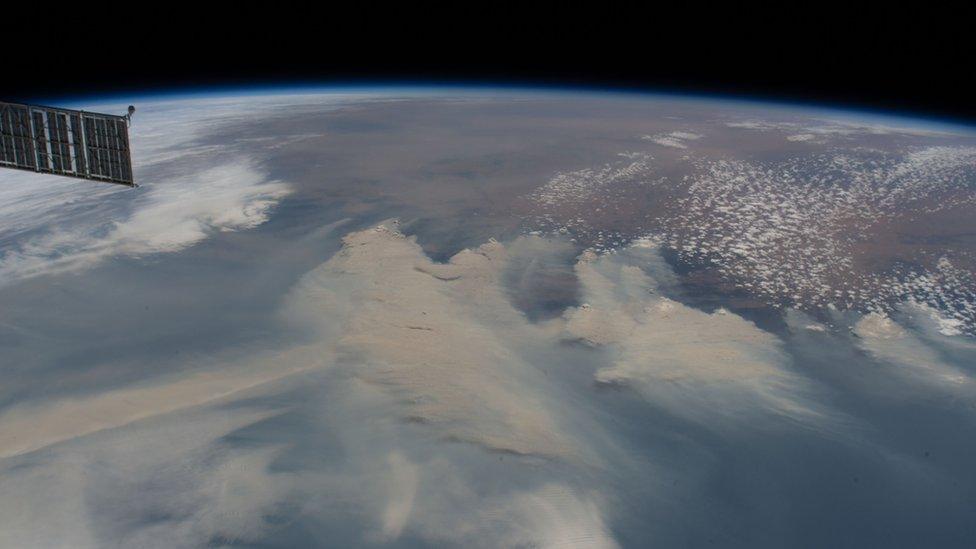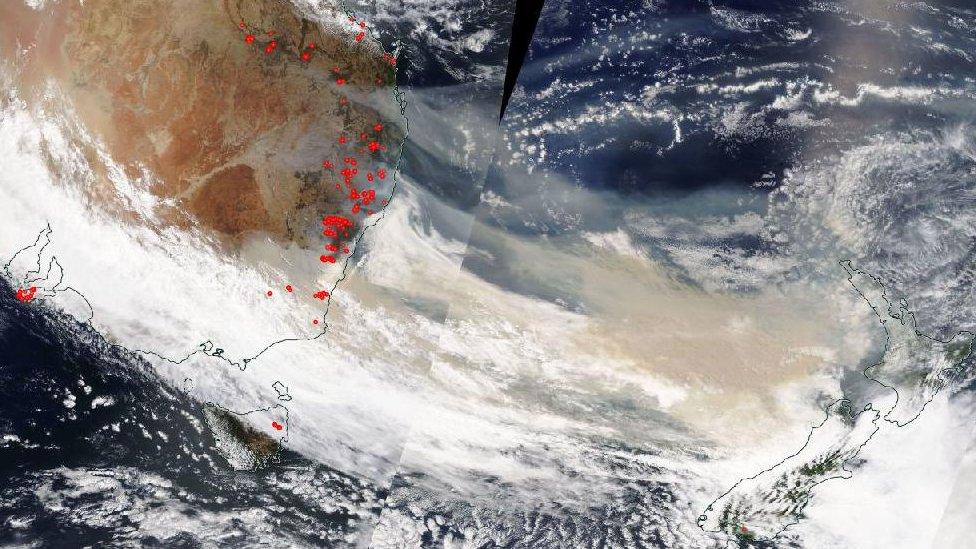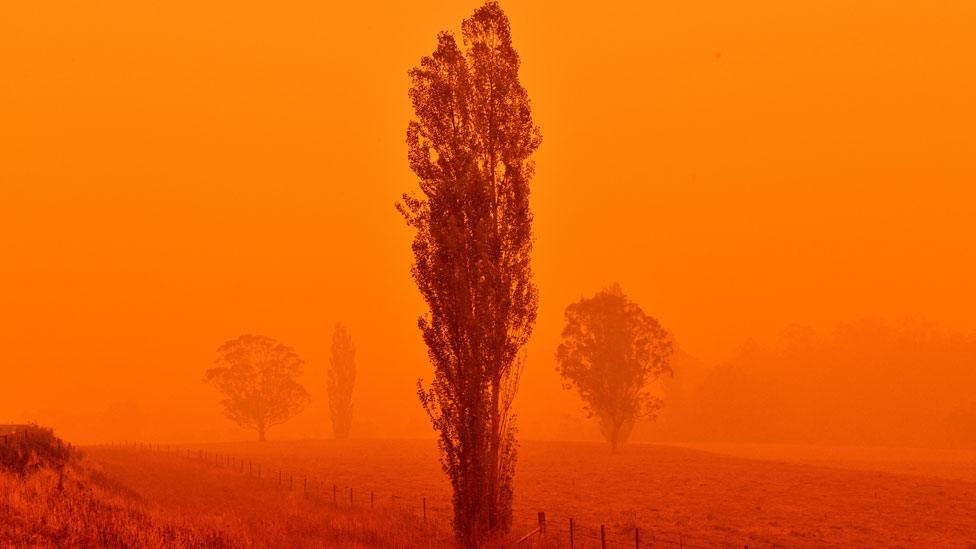Australia fires: Smoke to make 'full circuit' around globe, Nasa says
- Published

Bushfire smoke as seen near the International Space Station
Smoke from the massive bushfires in Australia will soon circle the Earth back to the nation, says Nasa.
Massive infernos have raged along the nation's east coast for months, pushing smoke across the Pacific.
Nasa said plumes from blazes around New Year's Day had crossed South America, turning skies there hazy, and moved "halfway around Earth" by 8 January.
"The smoke is expected to make at least one full circuit around the globe," the US space agency said.
Hundreds of bushfires have burnt across Australia, killing at least 28 people and destroying more than 2,000 homes.
Allow X content?
This article contains content provided by X. We ask for your permission before anything is loaded, as they may be using cookies and other technologies. You may want to read X’s cookie policy, external and privacy policy, external before accepting. To view this content choose ‘accept and continue’.

The unprecedented scale and intensity of the fires has been exacerbated by climate change, experts say.
How has the smoke travelled around the world?
Nasa said recent blazes had been so big they had produced an "unusually large" number of pyrocumulonimbus events - or fire-generated thunderstorms.
These had sent smoke soaring into the stratosphere, with some recorded as high as 17.7km (11 miles).
"Once in the stratosphere, the smoke can travel thousands of miles from its source, affecting atmospheric conditions globally," Nasa said.

A satellite image showing smoke travelling towards New Zealand on 5 January
The agency said it was studying the effects of smoke at this altitude and whether it provided "a net atmospheric cooling or warming".
What has been the smoke's impact closer to ground?
Nasa noted the smoke had changed the colour of skies in South America, and dramatically affected New Zealand, where it was "causing severe air quality issues" and "visibly darkening mountaintop snow".
New Zealand was blanketed by smoke from Australian fires at the start of January
Large Australian cities including Sydney, Melbourne, Canberra, and Adelaide have also endured dangerous air quality levels due to smoke from nearby bushfires.
On Tuesday, Melbourne residents were enduring a second consecutive day of "hazardous" air quality, prompting concerns about public health.
More than 100 fires continue to burn in the nation's east, however cooler conditions in recent days and forecast rain have aided firefighting efforts.
- Published23 January 2020

- Published31 January 2020

- Published17 January 2020
